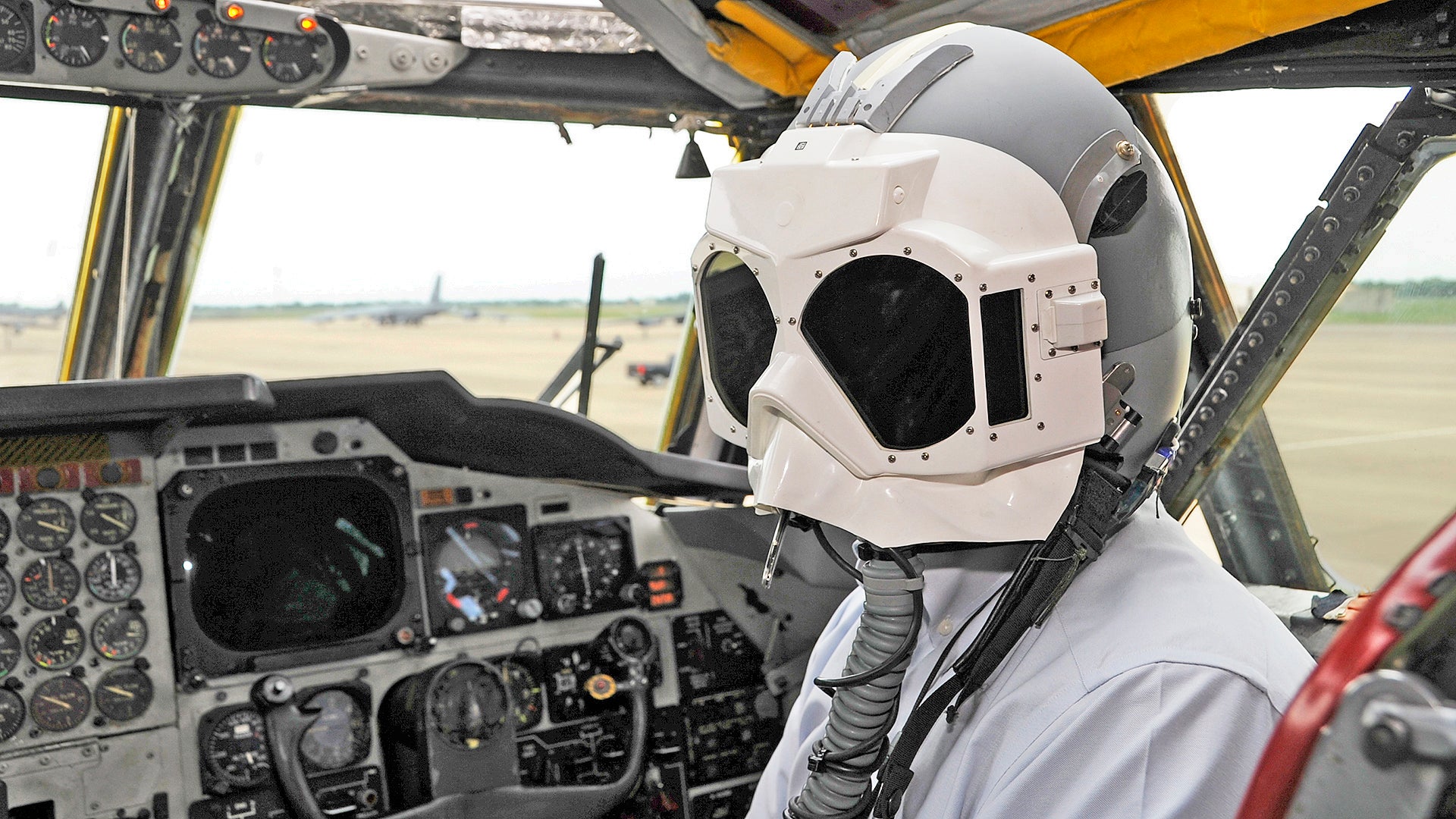During a nuclear exchange, as B-52H and B-2A pilots make their way to and from their targets, flashes from nuclear detonations would have the ability to temporarily blind them, making flying their aircraft impossible. This intermittent blindness could last two minutes during the day, or up to ten minutes at night. Different countermeasures were developed during the Cold War to counter this physiological reality. These included constructing thermal curtains to cover the B-52's windows, along with a television camera and FLIR system that, along with the BUFF's instruments, allow pilots to continue on their mission without external visibility. Polarized Lead Zirconium Titanate (PLZT, pronounced "plizzit") flash blindness goggles are also used for the same purpose, and they look as otherworldly as can be.
PLZT goggles attach to the pilot's helmet and are interfaced with a igloo cooler-like control and power supply unit (see the whole system here). The system works to detect dramatic and fast changes in light. When that a happens, a circuit is broken. This triggers the goggles to quickly turn opaque. Once the light has returned to normal the goggles will turn translucent again. Flightgear.dk does a great job at describing this unique and somewhat obscure system and its genesis in great detail:
After years of development, the first use of EEU-2/P goggles was by FB-111 crew out of Pease AFB in July, 1980. They then progressed to B-52, B-1 (which had a nuclear mission at the time), and KC-135 units, and eventually to the B-2 Spirit stealth bomber. The same units soldier on to this very day.
A source intimately familiar with the B-2 described how the goggles are deployed operationally. They're kept sealed (they are a one-time use kind of gear) and there are limited numbers of them remaining in USAF stocks. Although pilots generally do not train with them on while flying, they do go through an orientation to familiarize themselves with the process of attaching them to their helmet, and to experience what it's like to see through them. Our source described them as similar to wearing "thick glasses" with a limited peripheral view, but they aren't extremely heavy and would in no way keep a well trained pilot from flying the aircraft proficiently during combat. An eyepatch was also provided to cover one eye; the idea behind the eye patch being, if the goggles failed to activate when a blast went off, one eye would remain usable.
In addition to fielding EEU-2/P goggles, the B-2 was also designed to accommodate a removable glass pane that mounted above the cockpit dash that would work just as the goggles do, turning opaque to protect the crew's eyes during a flash. The glass pane leaves the dash inaccessible and it is supposedly easy to lean into if you forget it's there when fitted. Even with this setup, during a nuclear operation the goggles would still be worn as a backup should that system fail. The technology described was originally tested on the B-1, but did not find its way its way into the aircraft operationally, but a modular version of it seems to be alive and well in the B-2.
From a USAF technological document titled "Electro-Optical Performance Of PLZT Lenses" dated 1988:

Although they have been a staple in the cockpit of American strategic bombers and tankers for nearly 40 years, PLZT goggles were never adapted for use on tactical air combat assets. Flightgear.dk describes why:
So there you have it—the PLZT goggles, an obscure Cold War relic still soldiering on today as we enter what appears to be yet another Cold War.
Contact the author: [email protected]









